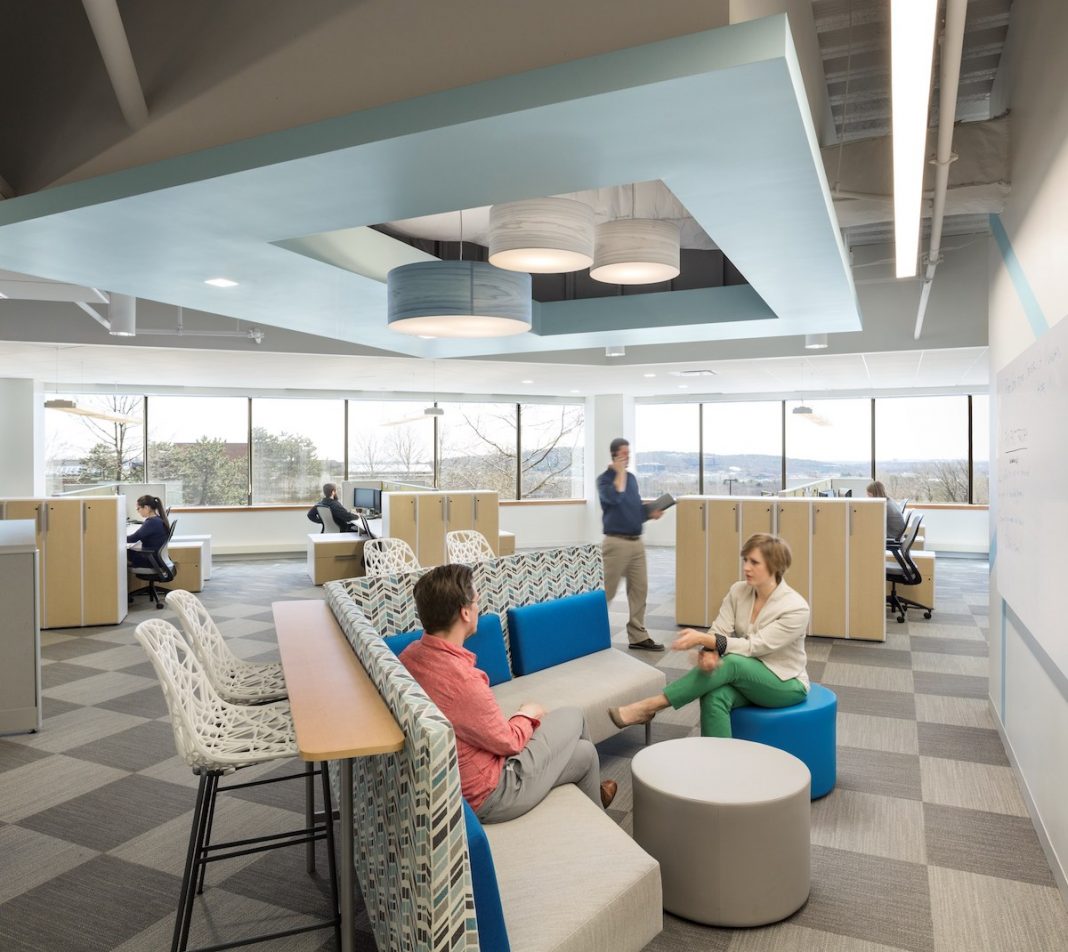Stantec’s Jennifer Grafton and Stephanie Wood share what workplace design can learn from education environments.
The most important skills for workers in 2023 are analytical thinking and creative thinking (WEF Future Jobs Report). Education environments are shifting to nurture the development of these skills in students – shouldn’t our workplaces do the same?
A look into the past
The Industrial Revolution ushered in a new era of education. The one-room schoolhouse made way for the graded-school model born from the rise of mass production, closely resembling factories spurring America’s growth. Students were educated efficiently, seated in a rigid grid, and facing the all-knowing instructor who delivered knowledge to a captive audience that moved from subject to subject at the sound of a bell. Repetition led to memorization, which aligned well with the expectations of the workplace, where many earned their living performing repetitive tasks on assembly lines.
The same influences and organization could be found in the workplace, which was in its infancy of development and heavily influenced by Taylorism, a theory that analyzes and synthesizes workflows for efficiency. With its regimented organization, the workplace was viewed largely as a production factory, with rigid layouts facing a single direction specifically designed to achieve the highest level of efficiency and maintain hierarchy between manager and staff. Cross-pollination between functions rarely existed and a person moved through their day achieving the tasks they were assigned in an ordered and timed fashion.
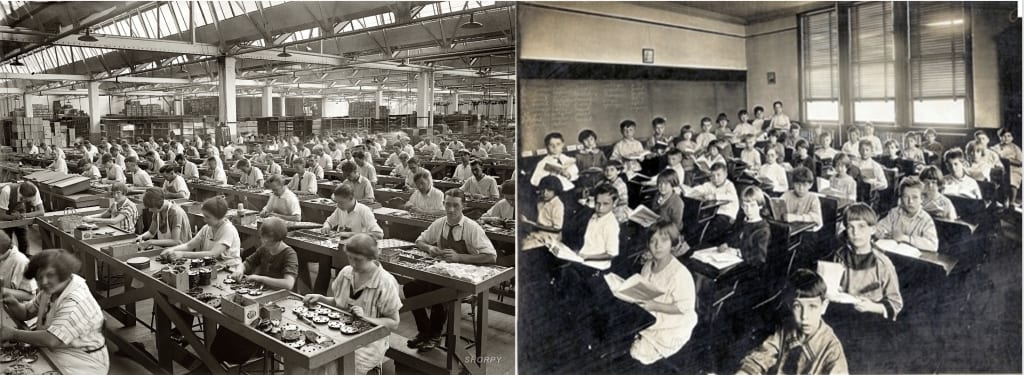
Modern day mobility and social interaction
Over time, education and workplace environments made significant changes philosophically and physically to what we now experience as modern day practice. In the education realm, research suggests that the one-size-fits-all approach to education is failing our students (Todd Rose “The End of Average”). As such, there has been a shift in pedagogy. Where efficiency was once prioritized over effectiveness and lessons were delivered with a mind toward success on standardized tests, instructors are now guiding self-paced, student-led learning that focuses on mastery over memorization.
Today’s education model challenges students to be critical thinkers, communicators, and collaborators, valuing skills for an increasingly complex and diverse workforce. School design has shifted away from the rigor of industrial era buildings to one with flexible and varied spaces that fosters multimodal learning and agency.
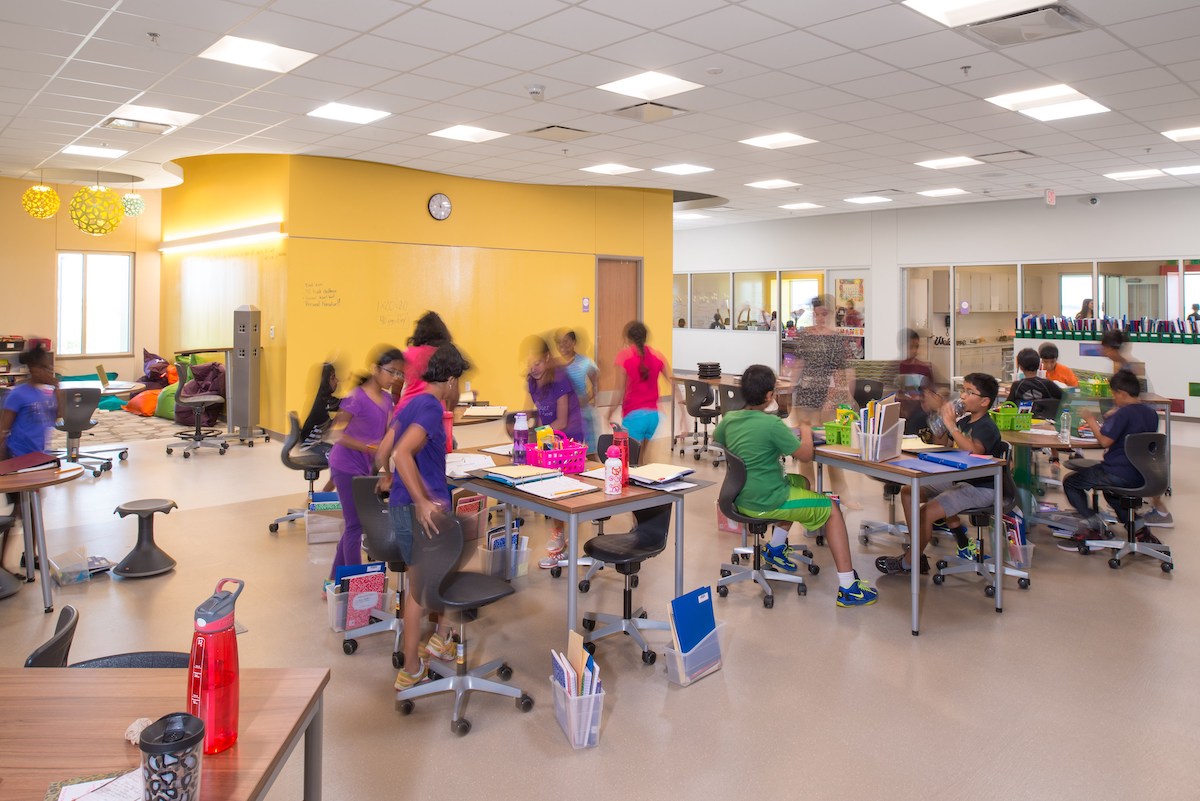
New education is beginning to impact the workplace
Though the modern workplace has made strides towards shifting values and pedagogy that mirror the education environment, it has been slower to catch up. Prioritization on efficiency over effectiveness is eroding away to make room for the next generation of workers, one that have been formed by newer education environments, only to enter a work environment that has not yet caught up.
It can be a confusing and disorienting experience with new sets of expectations, deadlines, and the fact that many office spaces are not designed to support the way in which they have learned. Rather they remain focused on the efficiency of the floorplate and furniture, not the individual. Layer that with the post-pandemic, increased hybrid environment – and suddenly – everyone is trying to figure out how they, as an employee, fit into the larger puzzle and ultimately are trying to answer the ‘why’ behind their role at the office.
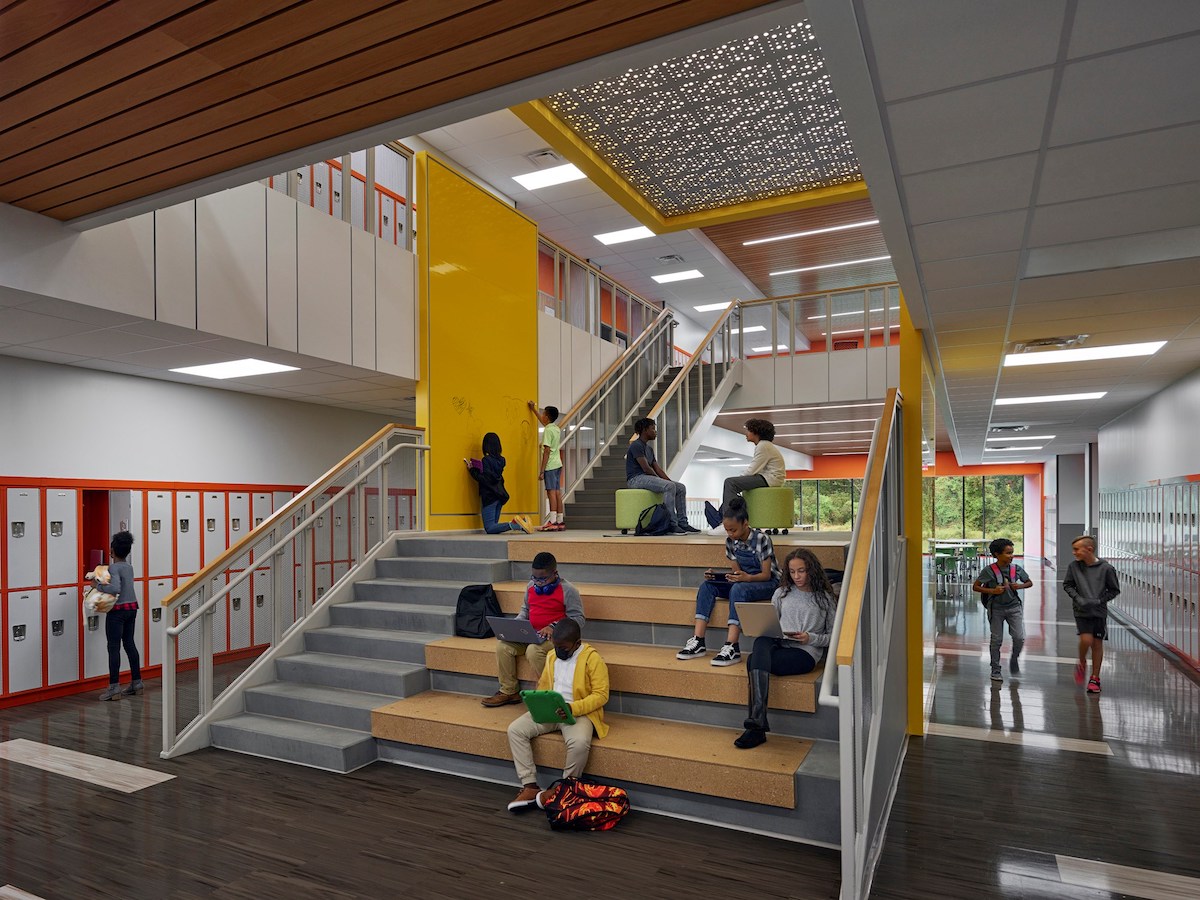
A recent study completed by Microsoft in the 2022 Work Trend Index Pulse Report stated that 76% of employees say they’d stay at their company longer if they could benefit more from learning and development support. This indicates the need to understand how the spaces we design is able to better support learning and development, and as such there must be a shift in understanding who we are designing for and what makes them successful.
Naturally, looking to the education environment provides critical insight to how individuals are supported through the types of space that are prioritized. Providing similar experiences allows space to encourage life-long learning, which promotes creativity, innovation, and ultimately performance.
Looking ahead to the future
How do we use this idea to inform the future of workplace design? When we think of shaping future generations through education, the focus has become the individual. It can be argued that it is easier to see and understand the vision for education than it is for workplace. Factors such as stock price, productivity, and P&L can cloud the focus. But imagine the success on all those levels if the people executing the organization’s vision experienced work environments that suited their needs to be high performers. What shifts are occurring now that we can capitalize on to make the workplace a better, more supportive, and thriving environment?

In the education world, it isn’t enough to simply move the teacher from the front of the room. In recent years there has been a renewed interest in educating the whole child – where positive school environments support academic, physical, cognitive, social, and emotional development. One way to accomplish this is by transitioning from the traditionally hierarchal structure to a flat, collaborative, team-oriented organization that recognizes and accommodates the individual needs of the learner and the educator.
Further, neurodiversity and behavioral health are becoming the framework around which school facilities are planned and children are educated. Isn’t this focus on the “individual” contrary to collaboration and teamwork? According to Todd Rose, by understanding each individual and being responsive to their needs, we are breaking down barriers and bringing them closer to the group. Leading educational consultants advocating for reform of educational practices that can lead to innovative models of education – centered around interdisciplinary themes, democratic leadership, shared responsibility, and self-directed learning.
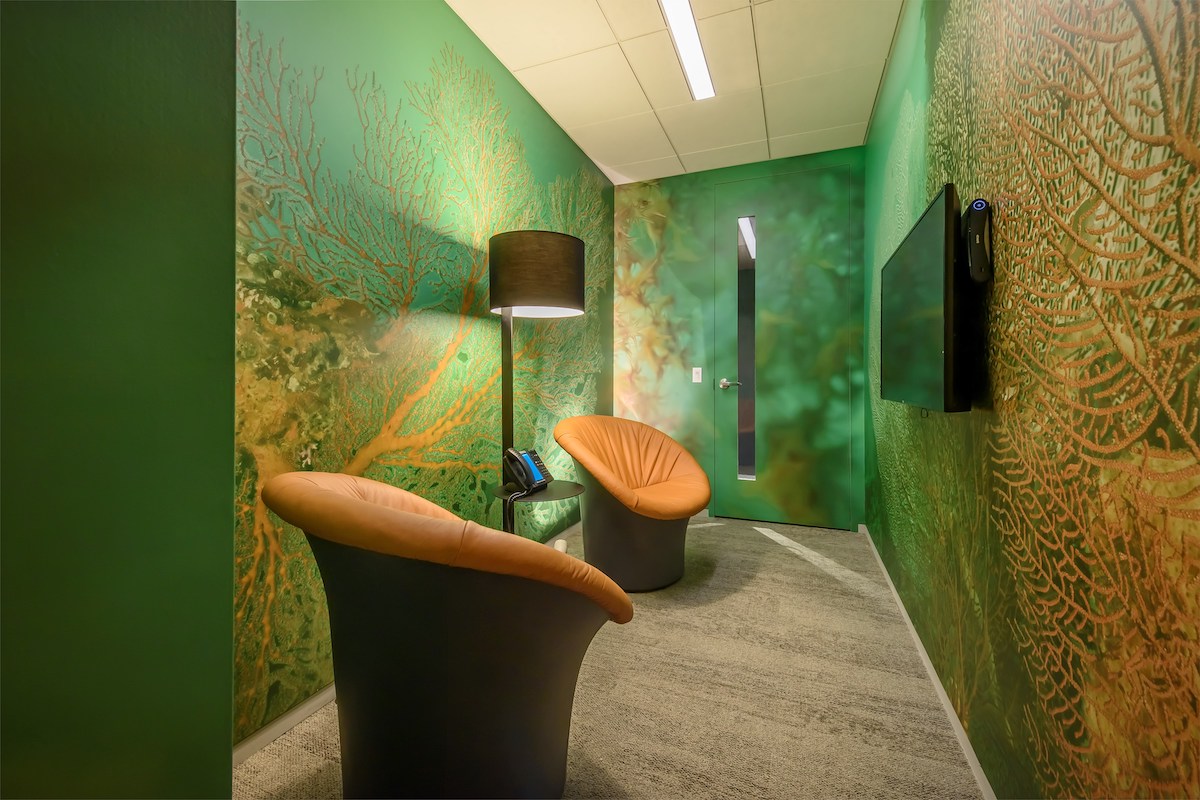
Emerging trends that are starting to be considered for the workplace include manifestations of space such as sensory rooms to support neurodiversity in the workplace. Other shifts are more subtle and include increasing movement to standards that are activity based instead of hierarchy based.
So, what can the future workplace learn from the education environment?
By shifting our focus, we can mimic the tenants of designing for education spaces because the future of workplace design is an extension of learning spaces. Education environments show us that the needs and expectations of future generations entering the workforce need supportive work styles that intentionally integrate them with their colleagues of all generations.
The workplace – like education – needs to be flexible to prepare people for jobs that currently don’t exist, and we can’t begin to conceive. Workers, like students, need a place to learn, develop, grow, and adapt to the ever-changing landscape. Let’s “flip the script” so that workspaces reflect an extended educational space to foster lifelong learning.

